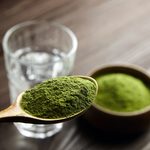Food Labels Deciphered
Uncover the truth about your fave foods with these clever detective strategies. Learn how to interpret food labels so you can make the right decision about what should go into your belly.
Look for Short Ingredient Lists
When you find a packaged food in the supermarket with a long list of ingredients on the label, just set it back on the shelf and look for a simpler version of the food. Many of those ingredients are various kinds of sugars and chemical additives added to enhance the looks, taste, or shelf life of the item. Most additives aren’t known to be harmful, but they aren’t about nutrition or taste as nature intended. One of their main purposes is to make up for a lack of nutritious ingredients and natural flavours in the product.
Think Twice About “No Cholesterol” Claims
Cholesterol is a fat that occurs only in animal products. Most people care about their cholesterol levels, but don’t realize that plants don’t contain any. Food companies take advantage of the situation by placing a cholesterol free label on plant-derived products.. Some of the offenders are cereal, bread, cookies, salad dressings, and, especially, oils and margarine. Oils are obviously fats, so the makers think you’ll be reassured to see that there’s no cholesterol in the corn oil, sunflower oil, or olive oil. Next time you see the claim, just say to yourself, “Duh! It’s a plant product! Of course it doesn’t contain cholesterol.”
Learn What Organic Really Means
There’s considerable confusion about the use of the word “organic” on food labels. Basically, the organic label is earned through a certification process, and it means the producer adhered to a strict set of rules and procedures. Inspectors verify the methods of production of all organic products.
Foods may also be labeled “100 percent organic,” “organic” (95 to 99 per cent organic), “made with organic ingredients” (74 to 94 per cent organic), or, for organic content of lesser amount, the specific organic ingredients may be listed.
Be Suspicious of “Natural” Labels
The use of “natural” on labels is a much looser affair than use of the term “organic.” There’s no single set of requirements for products claiming to be natural. Farmers or food companies that use the “natural” label are not subject to inspections as a condition of using the label. You just have to take their word for it.
Scrutinize the Serving Size
Many “Nutrition Facts” labels are designed to make you think you’re getting fewer calories than you really are. For example, labels list the nutrients on a per-serving basis. But be sure to check the “serving size” and “servings per container” lines. The candy bar that most people would eat all by themselves in a single sitting may say that it contains two servings. If you saw “100 calories” on the label, you must make a mental adjustment—you’re actually eating two servings, so you’re getting 200 calories.
Get the Whole Story
Marketers know that nutrition-conscious shoppers are interested in whole grains these days. Don’t be deceived into buying a product that’s labeled “wheat bread”. What you really want is “whole wheat” or “whole grain” bread.
Don’t Confuse Cereal Hype with Facts
If you want a healthy breakfast cereal, not one that just claims to be, ignore the large-type claims on the package and go right to the labels. Look for a short list of ingredients, with a whole grain as the first ingredient. Try to find one that has no sugar. Then look at the per-serving nutrients on the nutrition label. Your best bet is a cereal with a lot of fiber in each serving.
Don’t Get Soaked for Watery Foods
Water is the magic ingredient in prepared foods. If it’s first on the list of ingredients, that’s a clue that there’s also a lot of additives to give that water some taste and texture. You might not be surprised to see water at the top of the list of ingredients in soups. After all, soup does take a lot of water. It’s more surprising to find it so prominent in SpaghettiOs. Many salad dressings contain more water than anything else. Since oil and water don’t mix, these dressings are packed with additives to hold everything together.
Scan the can for MSG
Check out the ingredient list on the labels of prepared foods like soups. Keep reading, because it’s pretty far down on a long list. MSG is a synthetic version of the substance umami, which occurs naturally in some foods, like Parmesan cheese, soy sauce, and mushrooms. Widely used in Asian cooking, MSG went out of favour when it became associated with headaches, and other unpleasant symptoms. MSG (monosodium glutamate) is sometimes listed under its own name, but is can also be referred to as hydrolyzed soy protein, autolyzed yeast, or sodium caseinate, so make sure you check the list for all of these.



